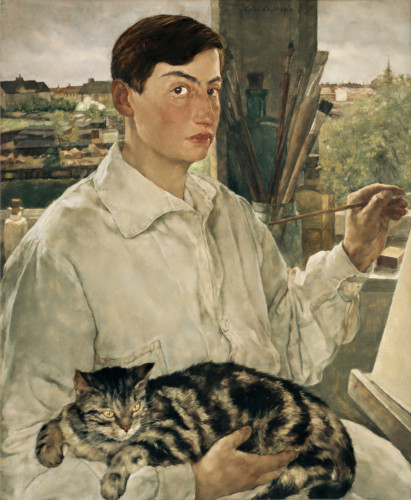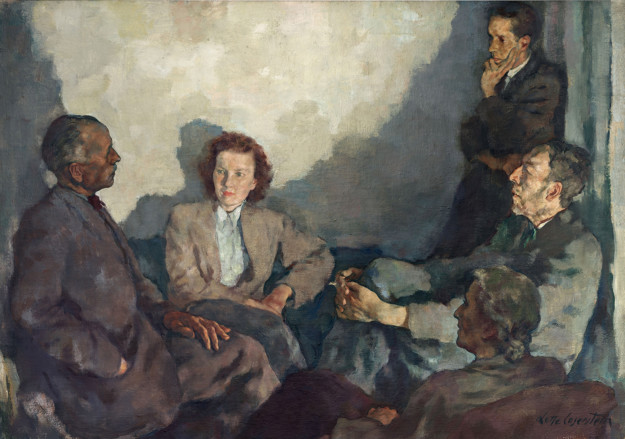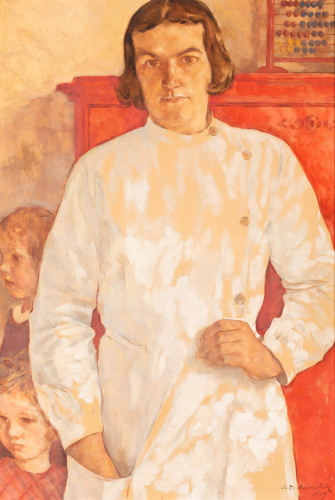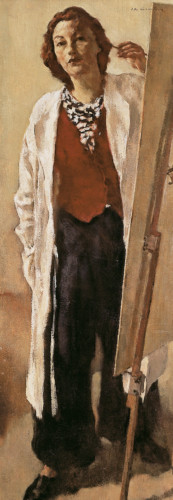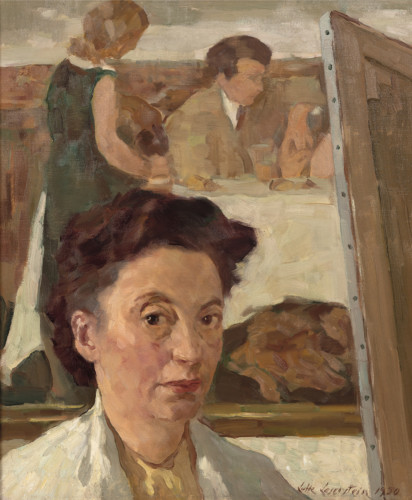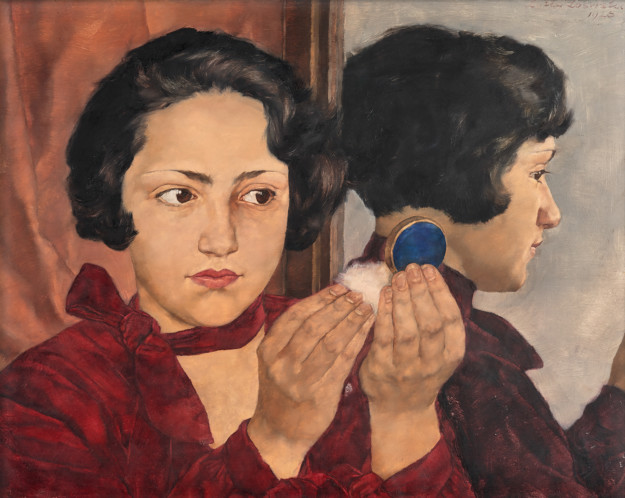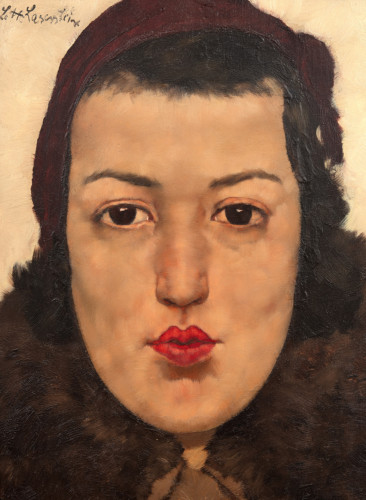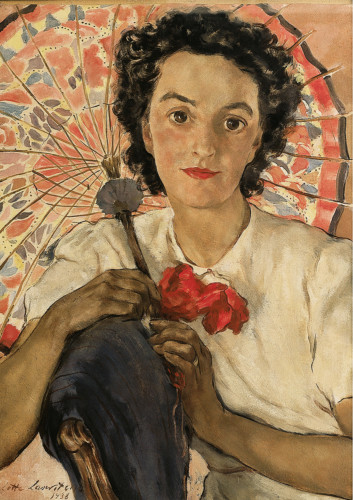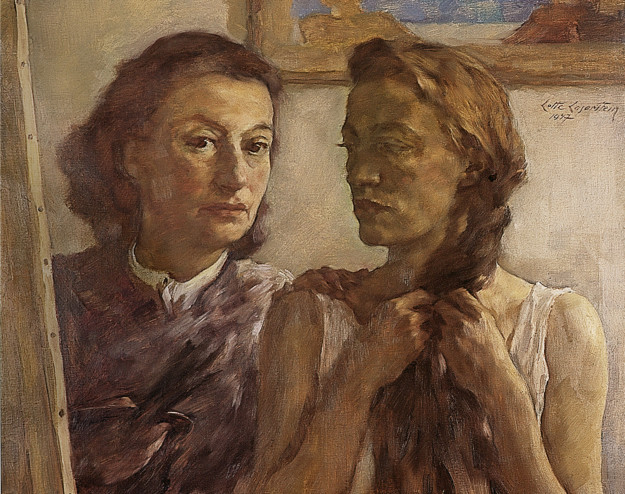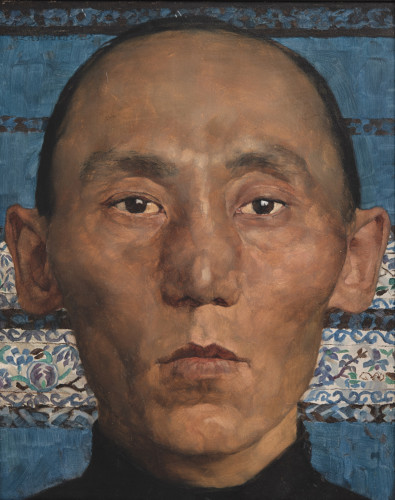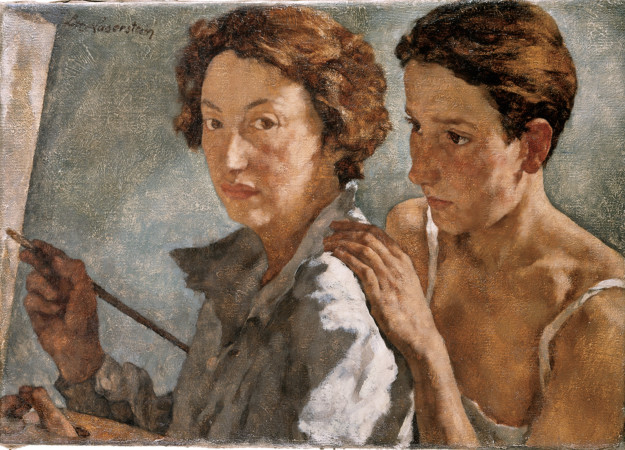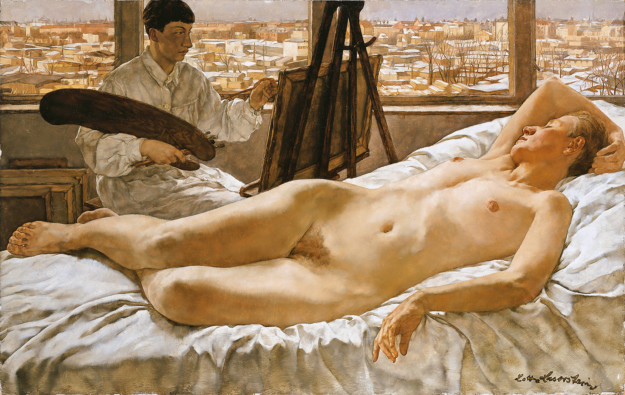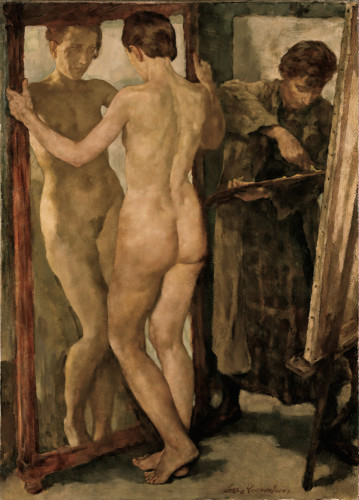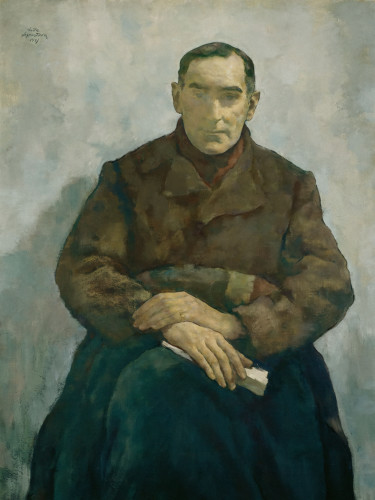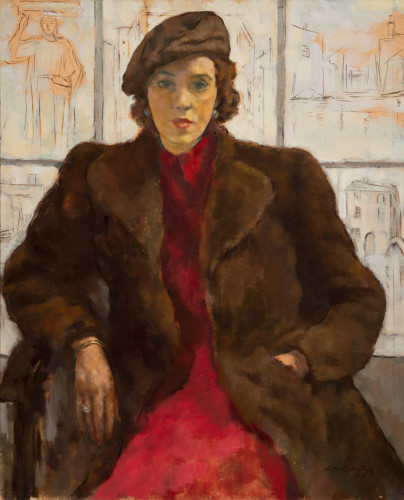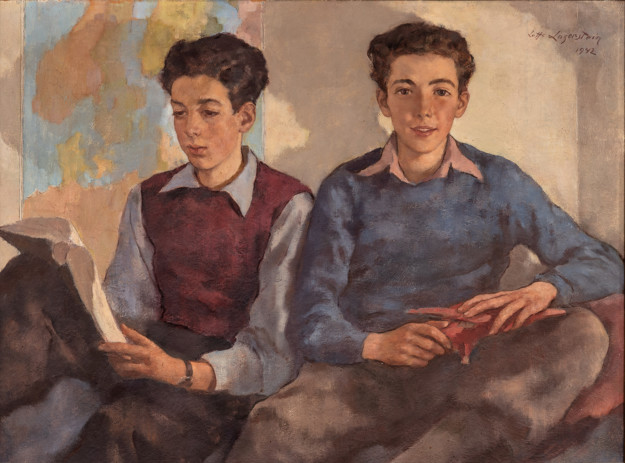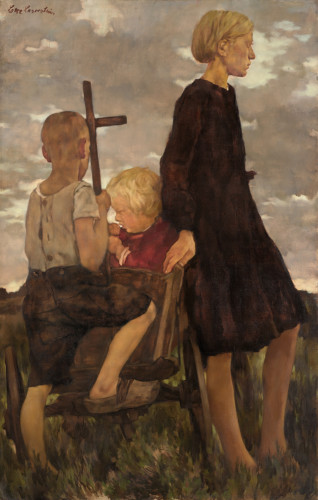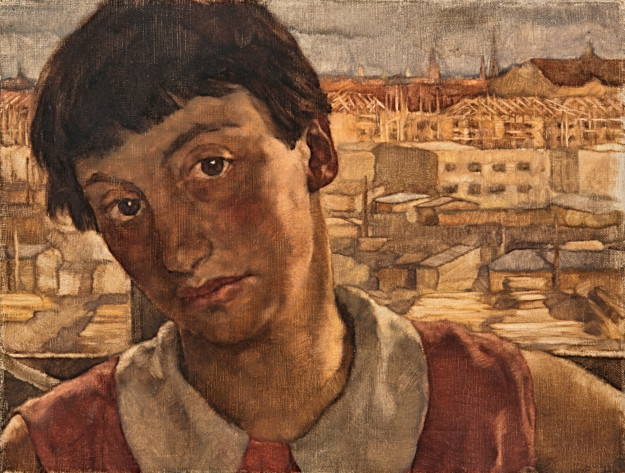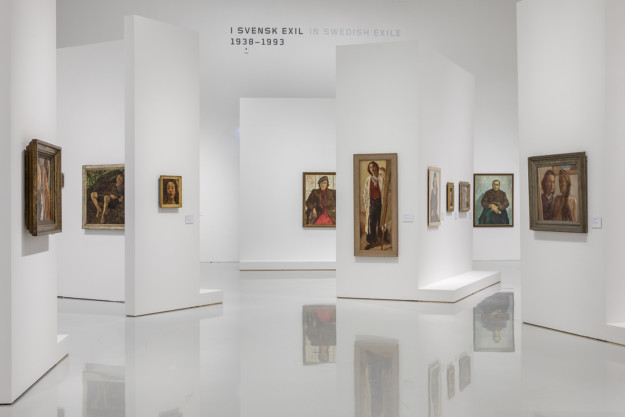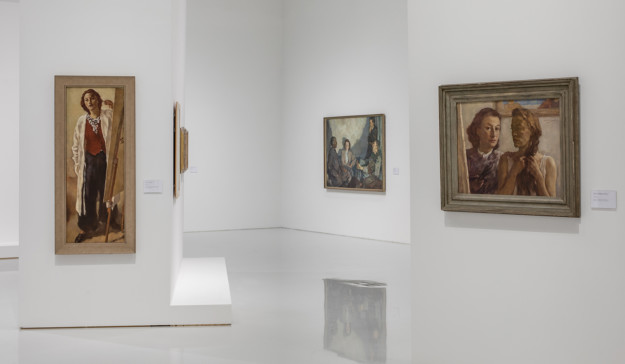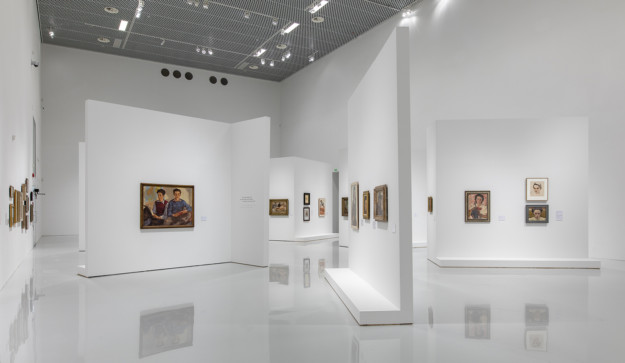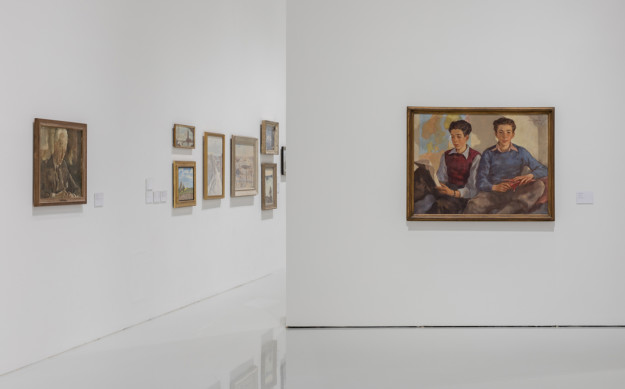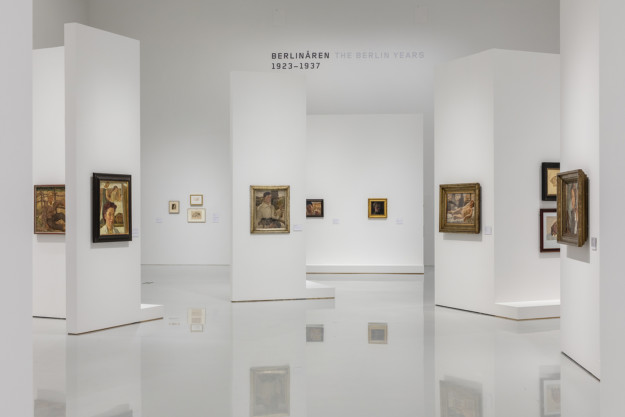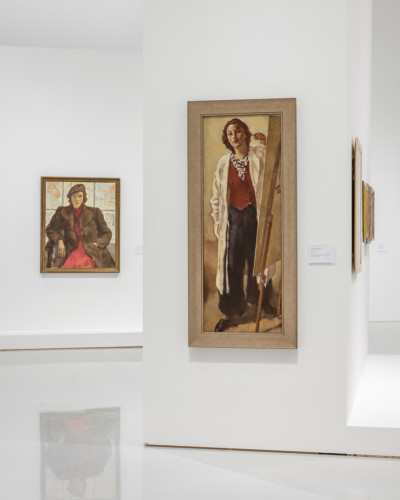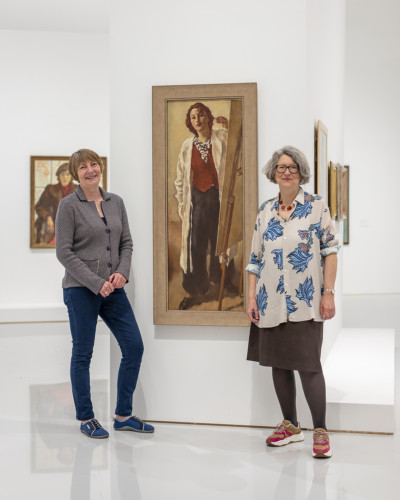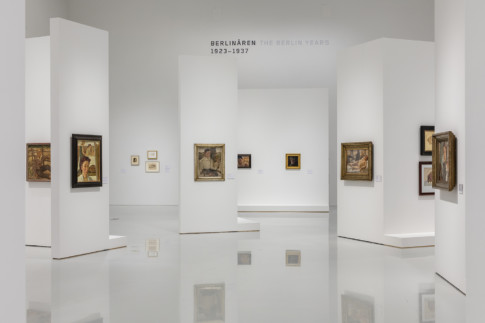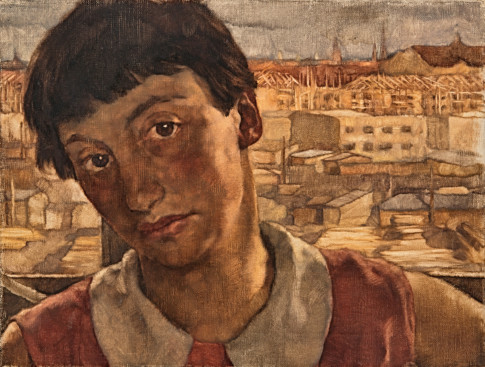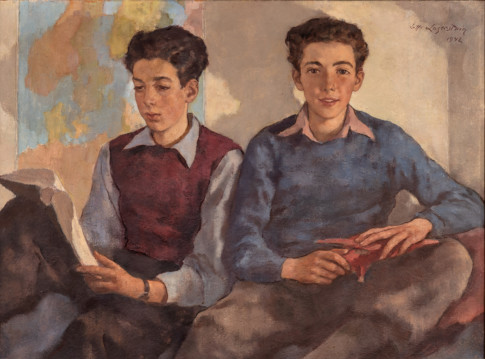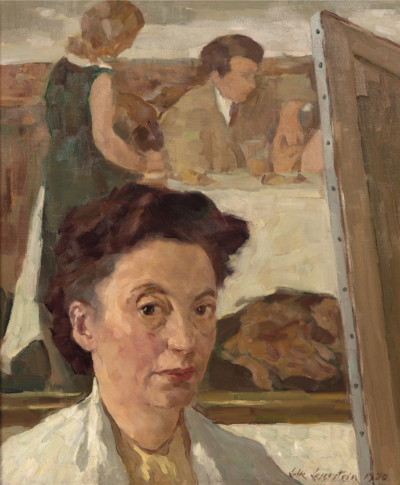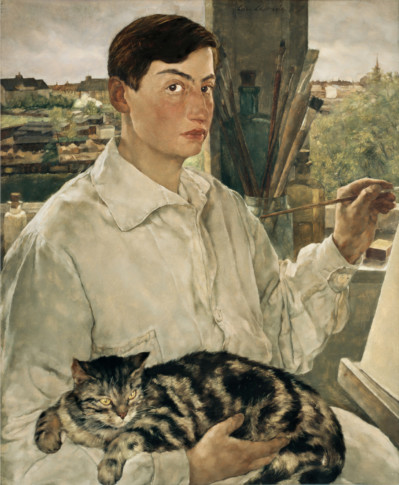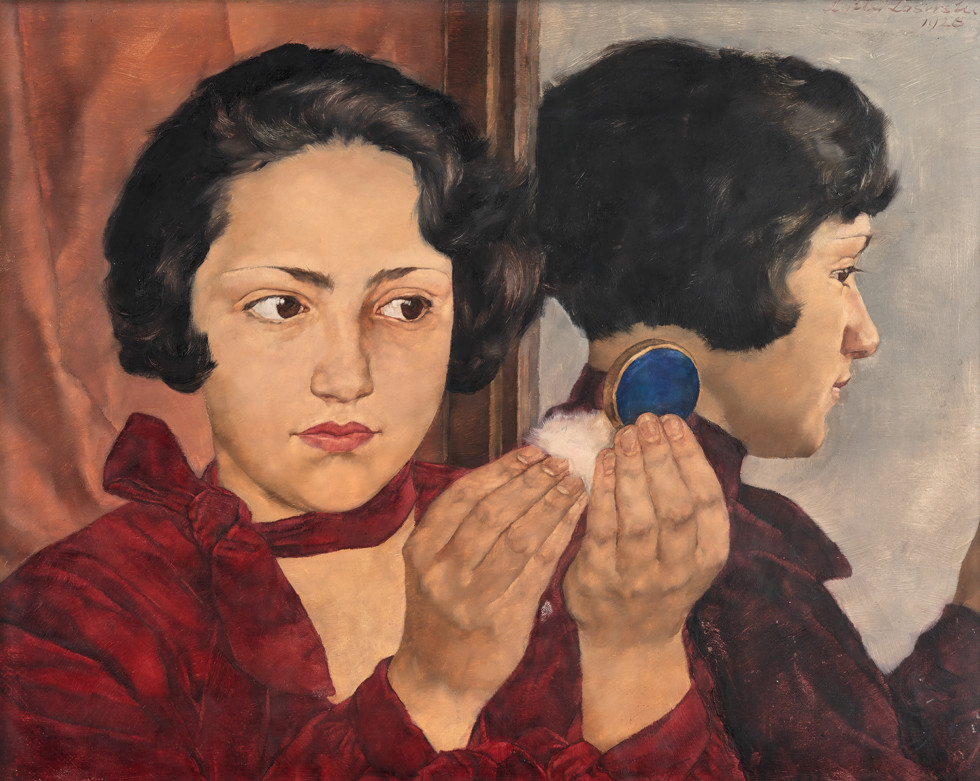
Lotte Laserstein, Russian Girl with Compact, 1928 Photo: Albin Dahlström/Moderna Museet ©Lotte Laserstein
Bildupphovsrätt 2023
Lotte Laserstein
A Divided Life
6.5 2023 – 1.10 2023
Malmö
Exhibitions in Berlin, Frankfurt, and Kiel have attracted broad audiences eager to explore this long-forgotten artist and have established a place for her in the history of twentieth-century art. However, these shows focused primarily on Laserstein’s work from the 1920s to the beginning of the 1930s—the period before she was forced to leave Germany and emigrated to Sweden. “A Divided Life” focuses as much on the multifaceted works she created in exile in Sweden as it does on those she made before leaving Germany.
Lotte Laserstein’s career as an artist began in Berlin in the 1920s. After graduating from the Academy of Arts there in 1927—as one of the first women to earn a degree—she quickly succeeded in making a name for herself in the city’s art scene. Laserstein captured the spirit of an era in scenes from her studio and portraits of cosmopolitan, emancipated women. At first glance, her work appears to share some of the characteristics of the movement known as the New Objectivity. But Laserstein did not exaggerate or caricature—instead, her work reveals an intimate realism that weaves together painting tradition with contemporary themes. The paintings she executed in Berlin, in which she depicts her life as an artist and shows us the many sides of the Weimar Republic’s modern “new woman,” are surprisingly current even today, particularly in light of the ongoing discussions around gender identity and queerness.The success predicted for Lotte Laserstein and ascribed to her by German art critics in the 1920s ended abruptly in 1933 when the Nazis seized power. As a Jew, Laserstein was increasingly excluded from the public art world. Thanks to an invitation to show her work at the Galerie Moderne in Stockholm in 1937, she was able to get out of Germany with some of her most important works and come to Sweden, where she would spend the greater part of her working life. In Sweden, Laserstein was able to build a new life for herself as a portrait and landscape painter.“
For five decades, Laserstein produced an extremely comprehensive, thematic, and stylistically multifaceted collection of works that has only partially come to light in earlier shows,” say the exhibition’s curators, Iris Müller-Westermann and Anna-Carola Krausse.
“In our exhibition, we ascribe to this period of Laserstein’s life and work the same status as the time she lived in Berlin.
Through her representational commissioned portraits, expressive self-portraits, moving depictions of other emigrants, and landscapes and urban scenes, it is possible to discern what living in exile was like. Laserstein’s Swedish work raises questions about what it means to lose one’s own cultural and social milieu and be forced to establish roots in a new society. Against the backdrop of today’s global migration patterns, the works Laserstein created while in exile in Sweden provide an important contribution to the ongoing dialogue around these issues.”Although Laserstein was able to complete a great many important portraits on commission—for clients that included well-known aristocrats, politicians, business leaders, and cultural figures—and although she was still able to make a living as an artist, her recognition in the Swedish art scene remained limited. It is likely that her unwavering commitment to realism during post-war decades dominated by abstraction played a role in preventing her from receiving a larger breakthrough in Sweden.
Lotte Laserstein described her life and her career with the words “My rescue to Sweden broke my life in two.” This division has shaped the structure of the exhibition. The first part is devoted to the artist’s time in Berlin, with key works that illuminate her artistic beginnings and early successes in the Weimar Republic. The second part features Laserstein’s years in Sweden.
Curators: Iris Müller-Westermann, formerly Museum Director of Moderna Museet Malmö and now Senior Curator at Moderna Museet in Stockholm and Anna-Carola Krausse, an art historian and Laserstein expert based in Berlin.
“Lotte Laserstein – A Divided Life” will be on view at Moderna Museet Malmö from 6 May through 1 October 2023. The exhibition will then move on to Moderna Museet in Stockholm from 11 November through 14 April 2024.
Support for this exhibition is provided by Mannheimer Swartling, the Barbro Osher Pro Suecia Foundation, and the Jacob Wallenberg Foundation. We thank also the Lotte Laserstein Exhibition Circle.

